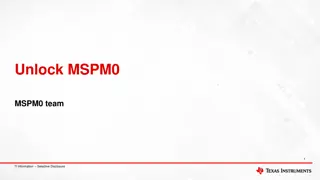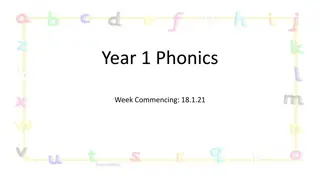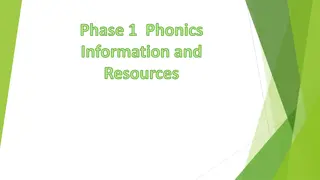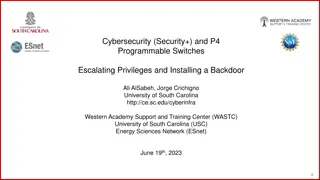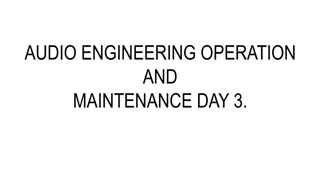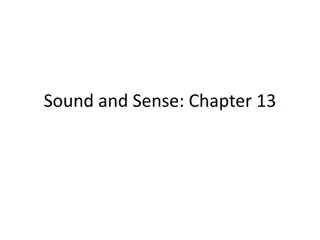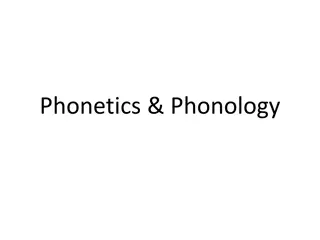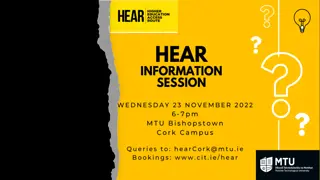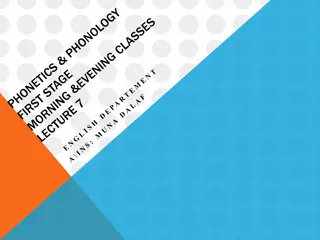Unlocking Microphones to Hear Inaudible Sounds Using BackDoor System
Researchers from the University of Illinois at Urbana-Champaign have developed the BackDoor system, which allows regular microphones to record high-frequency inaudible sounds by leveraging hardware non-linearity. The system utilizes a linear amplifier with non-linear behavior to capture signals at frequencies as high as 10kHz, making them audible through a unique approach involving validation, system design, and data communication techniques.
Download Presentation

Please find below an Image/Link to download the presentation.
The content on the website is provided AS IS for your information and personal use only. It may not be sold, licensed, or shared on other websites without obtaining consent from the author.If you encounter any issues during the download, it is possible that the publisher has removed the file from their server.
You are allowed to download the files provided on this website for personal or commercial use, subject to the condition that they are used lawfully. All files are the property of their respective owners.
The content on the website is provided AS IS for your information and personal use only. It may not be sold, licensed, or shared on other websites without obtaining consent from the author.
E N D
Presentation Transcript
BackDoor: Making Microphones Hear Inaudible Sounds Nirupam Roy, Haitham Hassanieh, Romit Roy Choudhury University of Illinois at Urbana-Champaign Presented by: Chen Shi 02/22/2018
Overview Record high frequency inaudible sound with regular microphone utilizing its hardware non-linearity BackDoor System RF Receiver
Microphone System Sound Recording Signal Flow Anti-aliasing Low-pass Filter
Non-linearity Linear Amplifier: Sout = A1Sin Nonlinear Behavior: Sout = A1Sin + A2Sin2 + A3Sin3+ For example, Sin = S1 + S2 = Sin(2 f1t) + Sin(2 f2t) Sout = A1(S1 + S2) + A2(S1 + S2)2 = Cos(2 (f1 - f2)t) + A 10kHz shadow recordable signal produced
Validation Microphone shows sensitivity at high frequencies High enough second order non-linear coefficient
System Design - Data Communication Transmitter Speaker | Receiver Microphone Transmitter Design Amplitude Modulation (AM) Fails On the microphone side, SAM = aSin(2 fmt)Sin(2 fct) Sout2 = A2SAM2= + cos(2 2fmt) 2fm detectable by microphone for fm < 10kHz However, speaker presents the same non-linearity, making message signal audible
System Design - Data Communication Transmitter Design Frequency Modulation (FM) SFM = Sin(2 fct + bSin(2 fmt)) Sout2= + (1 + Cos(2 2fc) + ), speaker output not audible However, microphone cannot record 2fc Second carrier fs from second speaker to down-convert SFMRx = A1(SFM + Sin(2 fst)); square SFMRx results in a fc fs term fc = 40kHz & fs = 50kHz Best response Microphone resonance
System Design - Data Communication Transmitter Design Ringing effect of speaker: heavy-tailed impulse response Non-linearity produces low frequency signals - slightly audible Inverse filtering Pre-code input Smod = h-1 * SFM Sout = SFM No ringing
System Design - Data Communication Receiver Design Unmodified microphone Decode input signal Bandpass filtering according to modulation bandwidth Hilbert transform to remove negative frequencies Multiply the resulting signal with a complex signal to bring the spectrum to baseband Differentiate its phase to obtain data bits
System Design - Jamming to prevent recording Passive Gain Suppression Automatic gain control (AGC) in microphone: adjust gain level corresponding to sound amplitude to fit within the ADC range Jamming by inserting ultrasound tones to lower AGC gain and suppressing the audible voice signals
System Design - Jamming Active Frequency Distortion Jamming by adding strong white noise to reduce SNR [40Hkz, 52kHz] band-limited Gaussian noise modulated with 52kHz carrier to down-convert to [0, 12kHz] Even better: shape the white noise signal with high power in frequencies important for voice
Evaluation - Test Setup Transmitter: (1) Communication (2) Jamming Receiver:(1 ) Samsung Galaxy S6 (2) Hacked MEMS Microphone
Evaluation - Human audibility 7 users around the speakers report levels of audible sounds Single Tone Unmodulated Signals Frequency Modulated Signals Amplitude Modulated Signals White Noise Signals BackDoor inaudible to all the users for all types of signals at all SNR levels except amplitude modulation
Evaluation - Data Communication High throughput compared to other acoustic comm. systems Package error rate influenced by phone orientation at Y/-Y
Evaluation - Data Communication Bit error rate variations against interference sources Voice and music - minimal impact White noise degrade performance by affecting the operating frequencies of BackDoor at ~10kHz
Evaluation - Jamming Efficacy Shaped Jamming Signal White Noise Jamming Signal
Discussions Jamming range ultrasound attenuation in air Speaker array to increase power level & multiple jammers Limitation in jamming with multiple microphone Data communication influenced by phone calls Interesting idea & well organized & clearly presented Setup could be improved & experiments could be more comprehensive and generally applicable Do we really need all these if we can afford a low-cost ultrasound receiver?


